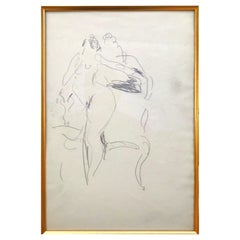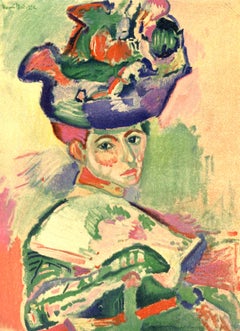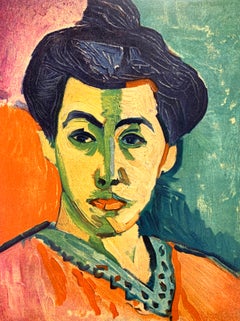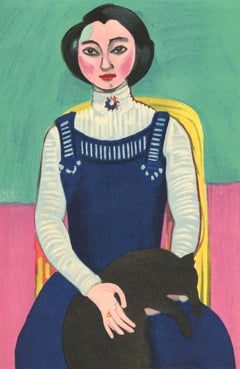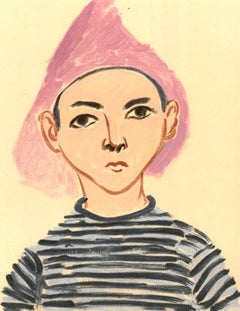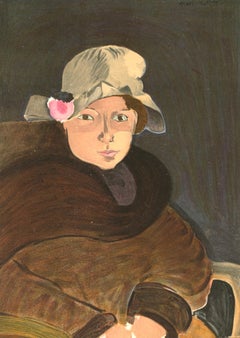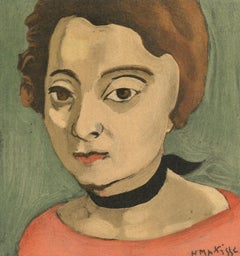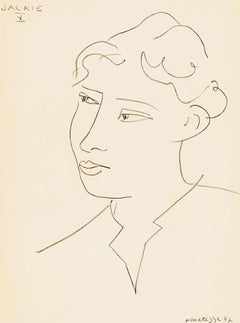Art By Matisse
Early 1900s Modern Paintings
Paper
1950s Fauvist Abstract Prints
Lithograph
1950s Fauvist Abstract Prints
Lithograph
1950s Fauvist Abstract Prints
Lithograph
1950s Fauvist Abstract Prints
Lithograph
1950s Fauvist Abstract Prints
Lithograph
1950s Fauvist Abstract Prints
Lithograph
1950s Fauvist Abstract Prints
Lithograph
1950s Fauvist Abstract Prints
Lithograph
1950s Fauvist Abstract Prints
Lithograph
1950s Fauvist Abstract Prints
Lithograph
1950s Fauvist Abstract Prints
Lithograph
1930s Fauvist Abstract Prints
Cardboard, Lithograph
2010s Contemporary Prints and Multiples
Lithograph
1950s Fauvist Abstract Prints
Lithograph
1950s Fauvist Abstract Prints
Lithograph
1950s Fauvist Abstract Prints
Lithograph
1950s Fauvist Abstract Prints
Lithograph
1950s Fauvist Abstract Prints
Lithograph
1950s Fauvist Abstract Prints
Lithograph
2010s Contemporary Prints and Multiples
Lithograph
1920s Modern Landscape Prints
Lithograph
1920s Modern Landscape Prints
Lithograph
1920s Modern Landscape Prints
Lithograph
1920s Modern Landscape Prints
Lithograph
1920s Modern Landscape Prints
Lithograph
1920s Modern Landscape Prints
Lithograph
1920s Modern Landscape Prints
Lithograph
1920s Modern Landscape Prints
Lithograph
1920s Modern Landscape Prints
Lithograph
1920s Modern Landscape Prints
Lithograph
1920s Modern Landscape Prints
Lithograph
1920s Modern Landscape Prints
Lithograph
1920s Modern Landscape Prints
Lithograph
1920s Modern Landscape Prints
Lithograph
1920s Modern Landscape Prints
Lithograph
1920s Modern Landscape Prints
Lithograph
1920s Modern Landscape Prints
Lithograph
1920s Modern Landscape Prints
Lithograph
1920s Modern Landscape Prints
Lithograph
1920s Modern Landscape Prints
Lithograph
1920s Modern Landscape Prints
Lithograph
1920s Modern Landscape Prints
Lithograph
1920s Modern Landscape Prints
Lithograph
1920s Modern Landscape Prints
Lithograph
1920s Modern Landscape Prints
Lithograph
1920s Modern Landscape Prints
Lithograph
1920s Modern Landscape Prints
Lithograph
1920s Modern Landscape Prints
Lithograph
1920s Modern Landscape Prints
Lithograph
1920s Modern Landscape Prints
Lithograph
1920s Modern Landscape Prints
Lithograph
1920s Modern Landscape Prints
Lithograph
1920s Modern Landscape Prints
Lithograph
1920s Modern Landscape Prints
Lithograph
1920s Modern Landscape Prints
Lithograph
1920s Modern Landscape Prints
Lithograph
- 1
Art By Matisse For Sale on 1stDibs
How Much is a Art By Matisse?
- 1stDibs ExpertFebruary 7, 2024Henri Matisse's art style is associated with several movements, including Postimpressionism and Fauvism. He was also the leading proponent of Fauvism, a movement with a name derived from the French word for "wild beast." Marked by vibrant hues, Fauvist paintings like Matisse's famous 1906 composition Le Bonheur de Vivre use wild, active brushstrokes and a palette unconstrained by nature, resulting in women with purple skin and trees with orange leaves. Often, these compositions unite pure color with the white of the exposed canvas to create a sense of transparency and light. Shop a variety of Henri Matisse art on 1stDibs.
- 1stDibs ExpertApril 5, 2022Henri Matisse, throughout his decades-long career, had a number of different impacts upon the art world. However, his seminal works in so-called Fauvism (French for ‘wild beast’) set him apart from the start. With strident use of color and seemingly wild brushwork, works from Matisse’s formative periods are among the most highly sought after by collectors. You’ll find a collection of expertly-vetted Matisse pieces from some of the world’s top dealers on 1stDibs.
- Who did Matisse influence?1 Answer1stDibs ExpertApril 16, 2024Matisse influenced a large number of artists. During his lifetime, his paintings, marked by quick, gestural strokes and fluid contours, informed many of his contemporaries in the Fauvist movement, such as Albert Marquet and Georges Rouault. Matisse's influence can also be seen in the works of Wassily Kandinsky, Marc Chagall, David Hockney, Richard Diebenkorn and Juan Gris. French fashion designer Yves Saint Laurent also drew inspiration from Matisse's pieces. On 1stDibs, shop a collection of Henri Matisse art.
- Who was Matisse influenced by?1 Answer1stDibs ExpertFebruary 1, 2024Matisse was influenced by a number of other artists, including Vincent van Gogh, Paul Cézanne, Paul Gaugin, Paul Signac and Gustave Moreau. The French painter, sculptor and craftsman also drew inspiration from the flattened forms of figures in medieval and early Renaissance paintings, such as in how he approached nudes. Rejecting strict realism, he distilled forms into their essential parts and then translated these into voluptuous, rounded contours. Explore a range of Henri Matisse art on 1stDibs.
- Was Matisse an Impressionist?1 Answer1stDibs ExpertMay 3, 2024No, Matisse was not an Impressionist. Art historians typically classify his work as part of Post-Impressionism, a movement that turned away from the naturalism of Impressionism and focused even more on conveying emotions through painting. Along with fellow painter André Derain, Matisse was also the leading proponent of Fauvism, a movement whose name is derived from the French word for "wild beast." Marked by vibrant hues, Fauvist paintings like Matisse's famous 1906 composition Le Bonheur de vivre use wild, active brushstrokes and a palette unconstrained by nature, resulting in visuals like women with purple skin and trees with orange leaves. Often, these compositions unite pure color with the white of the exposed canvas to create a sense of transparency and light. On 1stDibs, shop an assortment of Henri Matisse art.
- 1stDibs ExpertApril 5, 2022Henri Matisse's last painting was completed in 1951, and was titled Woman in Yellow Blouse. He also created a piece called The Swimming Pool, in 1952, which featured cutouts of divers and sea creatures in hues of blue. Shop a selection of Henri Matisse pieces from some of the world’s top art dealers on 1stDibs.
- 1stDibs ExpertApril 22, 2024Henri Matisse was famous for his work as a draftsman, sculptor, printmaker and painter. He is especially well known for his use of color. Although classically trained at the Académie Julian in Paris, he quickly abandoned traditional techniques and genres to pioneer a style all his own, marked by quick gestural strokes and fluid contours. Along with fellow painter André Derain, Matisse was the leading proponent of Fauvism, a movement whose name is derived from the French word for "wild beast." Marked by vibrant hues, Fauvist paintings like Matisse's famous 1906 composition Le bonheur de vivre use wild, active brushstrokes and a palette unconstrained by nature. Shop an assortment of Henri Matisse art on 1stDibs.
- 1stDibs ExpertOctober 7, 2024The difference between Matisse and Picasso is that their work is associated with different art movements. Henri Matisse was a leading proponent of Fauvism, a movement whose name is derived from the French word for "wild beast.” Marked by vibrant hues, Fauvist paintings like Matisse’s famous 1906 composition Le Bonheur de vivre have wild, active brushstrokes and a palette unconstrained by nature, resulting in imagery like women with purple skin and trees with orange leaves. Although his work evolved over the course of his career, Pablo Picasso is best known for his association with the Cubist movement, which he is credited with founding with Georges Braque. In Cubist works, reality gets fragmented into flat, geometric forms. Shop a collection of Henri Matisse and Pablo Picasso art on 1stDibs.
- 1stDibs ExpertFebruary 7, 2024Some of Henri Matisse's most famous paintings include Le Bonheur de Vivre, Blue Nude (Souvenir de Biskra), Woman with a Hat, Music, The Green Stripe and L'Atelier Rouge. Matisse also worked as a draftsman, printmaker and sculptor. Regardless of what medium he was working in, the French artist was a master of color. Although classically trained at the Académie Julian in Paris, he abandoned traditional techniques and genres to pioneer a style all his own, marked by quick gestural strokes and fluid contours. Find an assortment of Henri Matisse art on 1stDibs.
- 1stDibs ExpertFebruary 27, 2024Henri Matisse stopped painting due to health concerns. In 1941, the French artist required surgery for cancer and used a wheelchair afterward. The physical limitations of his disability made it difficult for the artist to continue to produce both paintings and sculptures. However, he adapted by cutting shapes from colored paper for creative new works. On 1stDibs, find a selection of Henri Matisse art from some of the world's top dealers and galleries.
- 1stDibs ExpertApril 5, 2022Henri Matisse created Icarus in 1947. It was printed using a stencil technique and was later included among 20 other pieces in his book Jazz. Shop a selection of Matisse’s pieces from some of the world’s top art dealers on 1stDibs.
 David Brooker Fine ArtMay 13, 2021If it's an original Matisse painting it would cost many millions of dollars. Even the simple sketches are worth hundreds of thousands and are highly collected. His pencil drawings are the most affordable of his originals and are priced in the tens of thousands to the hundreds of thousands depending on the importance of the piece.
David Brooker Fine ArtMay 13, 2021If it's an original Matisse painting it would cost many millions of dollars. Even the simple sketches are worth hundreds of thousands and are highly collected. His pencil drawings are the most affordable of his originals and are priced in the tens of thousands to the hundreds of thousands depending on the importance of the piece.- 1stDibs ExpertApril 5, 2022Matisse originally used cut-outs to plot his paintings, but as he aged he found it more difficult to paint and turned to cut-outs as his primary form of art. Using sheets of paper and scissors, he would cut-out shapes and then arrange them onto paper or a canvas. He did have assistants paint the pieces of paper in his later years as his range of movement was severely restricted but his artistic vision was not. Shop a selection of Matisse pieces from some of the world’s top art dealers on 1stDibs.
- 1stDibs ExpertFebruary 22, 2021A Matisse painting is typically worth anywhere from a few thousand dollars to $1 million, on average. Matisse's “L'Odlisque, harmonie bleue” fetched $33.6 million dollars at auction. Therefore, the price of a Matisse painting can vary depending on period, condition, and style.
- 1stDibs ExpertFebruary 13, 2024The exact number of paintings that Matisse painted isn't known. Art historians have determined that the French artist produced at least 1,000 works over the course of his life. Roughly half of these pieces are thought to be paintings. Some of his most famous paintings include Le Bonheur de Vive, Blue Nude, The Green Stripe and L'Atelier Rouge. Explore an assortment of Henri Matisse art on 1stDibs.
- 1stDibs ExpertApril 5, 2022Henri Matisse's artistic style is largely classified as Fauvism. His colorful, expressive paintings also helped to influence Expressionist art. Some of the French artist's most famous paintings include Blue Nudes, La Danse and Le Bonheur de Vivre. Find a collection of Henri Matisse on 1stDibs.
- 1stDibs ExpertMarch 22, 2022Henri Matisse made more than 100 cut-outs. The French artist began producing them in the 1930s and continued to create them until his death in 1954. He described his process as "cutting into color." On 1stDibs, find a range of Henri Matisse art.
- 1stDibs ExpertSeptember 25, 2019
Fine art is a category of art comprising works with purely aesthetic purpose, as opposed to applied art, which serves a practical function.
- 1stDibs ExpertFebruary 21, 2024In contemporary art, conceptual art is a movement that began in the 1960s. Artists producing conceptual art assign more importance to the idea behind the art than to the piece itself. An example is Joseph Kosuth’s One and Three Chairs, a piece consisting of a real chair, a photograph of a chair and the dictionary definition of the word chair. When the work was displayed, Kosuth included instructions for any chair to be photographed and then displayed beside its image. In this way, the chair itself is not the artwork. Rather, the art comes from examining the way the object, image and words provide competing and complementary definitions of what a chair is. Find a large selection of fine art on 1stDibs.
- What kind of art is Western art?1 Answer1stDibs ExpertApril 5, 2022Western art can reference art made in the American West, typically at the end of the 19th century. It can also reference any type of art that comes from the “west,” meaning a region that shares a European tradition, including the United States and Canada. On 1stDibs, find a variety of original artwork from top artists.
Read More
Revisiting Robert Rauschenberg’s Creative Rebellion on His 100th Birthday
A planet-wide celebration feels fitting for an artist who saw connections everywhere: between paint and photography, art and life, self and surroundings.
Red Grooms’s 3D Tugboat Is a Chaotic, Comic Take on New York Life
The sculptural lithograph is part of the inimitable artist’s “Ruckus” series, now on view at the Brooklyn Museum.
Joan Mitchell’s Rare, Late-Career Diptych Buzzes with Life
Beneath the inky blackness, the painter’s irrepressible energy electrifies this pair of intaglio prints.
The 1stDibs Guide to Types of Abstract Art
Get to know the key movements and artists who have influenced visual culture for more than a century.
Romare Bearden’s Humanity Infuses His Bright, Bold Art
Through collage, painting and printmaking, the artist foregrounded Black life in America in revolutionary new ways.
Andy Warhol and Suzie Frankfurt’s ‘Wild Raspberries’ Cookbook Is an Artful, Fanciful Delight
This set of recipes and original prints might not make you a better chef. But it will make you smile.
Art Brings the Drama in These Intriguing 1stDibs 50 Spaces
The world’s top designers explain how they display art to elicit the natural (and supernatural) energy of home interiors.
Welcome (Back) to the Wild, Wonderful World of Walasse Ting
Americans are rediscovering the globe-trotting painter and poet, who was connected to all sorts of art movements across a long and varied career.
